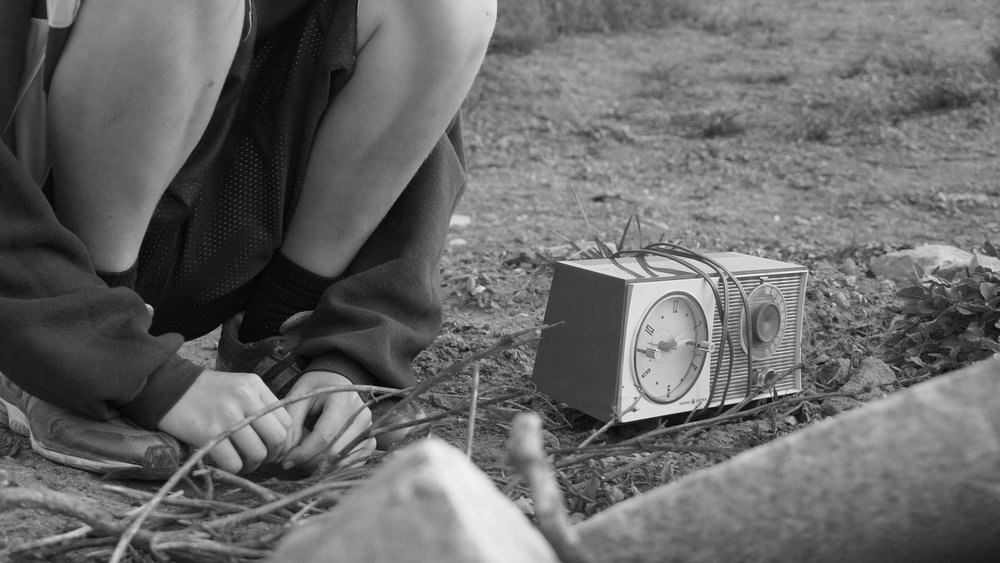Types of Film Cuts
Below find examples of the many types of cuts we will be talking about.
Achieving continuity editing
Continuity Editing gives the viewer the impression that action unfolds with spatio-temporal consistency and can be Achieved by:
•Getting Coverage (multiple shots—b-roll)
•Cutting on Action
•45 Degree Rule
•180 Degree Rule
•Spatial Unity
Coverage: refers to shooting a scene from a variety of angles and distances so you can edit a scene smoothly, and with interest and emotional power. It's something that the cinematographer and director take care of, but it is all about the process of shooting to edit. Each of these shots need a different setup--meaning the light, the camera, and the arrangement of elements within the frame have to be carefully set up for each different angle.
If I were shooting this scene, I'd do the following.
Light and "set-up" the master shot on the top left. That way I would have a wider shot to match the lighting and the blocking.
I'd shoot the bottom right next because it's another wide shot and it's likely that you could use close to the same set-up probably readjusting the light rearrangement to the left of the bed.
I would shoot his reverse shot next (bottom left) because the lighting would likely stay the same.
Lastly, I would shoot the top right over-the-shoulder shot, because the cinematographer would have to adjust the lighting from the bottom two.
I would shoot the scene all the way through each angle for multiple takes so that I would have plenty of coverage for editing.
I would be making these decisions to shoot efficiently in production, but the process of getting coverage is all about continuity editing.
Cutting on Action:
“The technique of cutting on action is a huge component of, well, action films. Of course, this type of cut can be used on less-explosive action as well. The basic idea of cutting for action is that the editor cuts from one shot to another and matches the action of the shots. Editing is all about motivation. Each time you cut to a new shot you need to ask yourself: why? In the words of Videomaker:
Don’t be tempted to wait for a pause and then cut, unless you have a good reason.
Your film will develop a better ‘flow’ if you cut on action instead of waiting for pauses. One of the best examples of motivated cutting is The Matrix. Watch the following clip closely and specifically look for instances of cutting on action. Almost every cut happens mid-action. This results in a much smoother transition and a more tense action scene.”
The important thing to remember is that the last action of the first shot has to be repeated at the beginning of the second shot
You have to shoot the same movement twice all the way through similarly to how you would shoot a basic sequence. You would shoot each angle from beginning to the end of the action.
Obvious situations where editing on the action is convenient
•Opening doors
•Getting out of cars
•Sitting down
•Standing up
•Reaching for objects
•Starting to walk
•Starting to run
The 180-degree rule refers to spatial continuity because it keeps viewers oriented in the scene and the 45-degree rule (or 30 degree rule) refers to varying shot angles when changing size to avoid jump cuts.
See Module 8, to review these concepts.
Spatial unity can refer to the master shot, an eye-line match or the 180 degree rule. It is about creating a look of continuous space, so that the viewers believe that these shots are happening in continuous time and space.
Eye-line match:
“Eye-line matching is a pretty straight forward concept. When shooting video, you want to keep your subject’s perspective in mind. For instance, if he or she is standing and looks at a phone out of frame sitting on a table, your cut away to the phone should be from the subject’s perspective…ie, slightly elevated and angled. This is best described visually.
You should notice that the choice of camera shot mirrors the actress’s motion. When she first looks at the painting, we get a view of the painting from her point of view. As she steps in closer to really examine the painting, we get a close up angle of the image she’s looking at. We follow her eyes, and therefore, her perspective. This is eye-line matching for video editing.”


